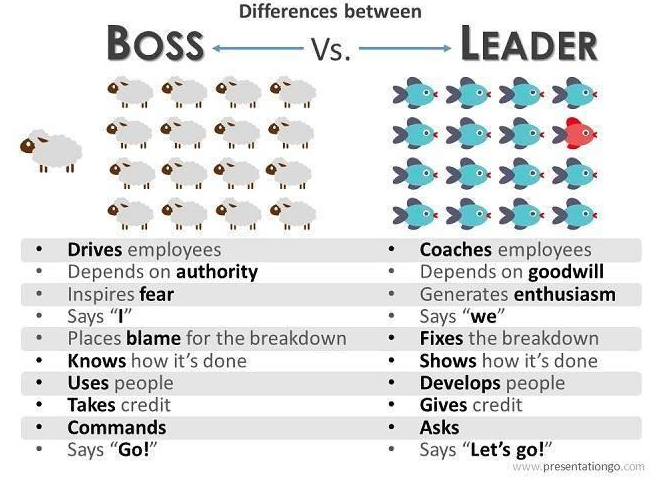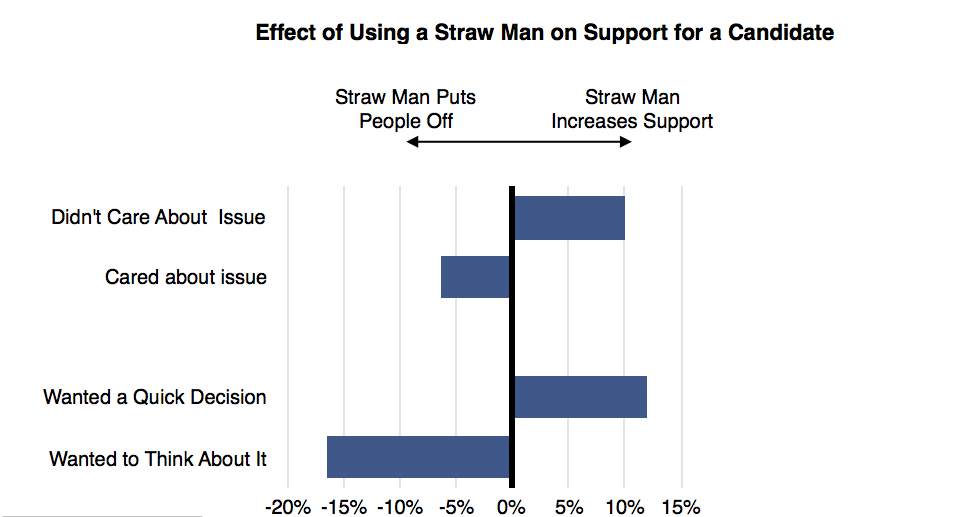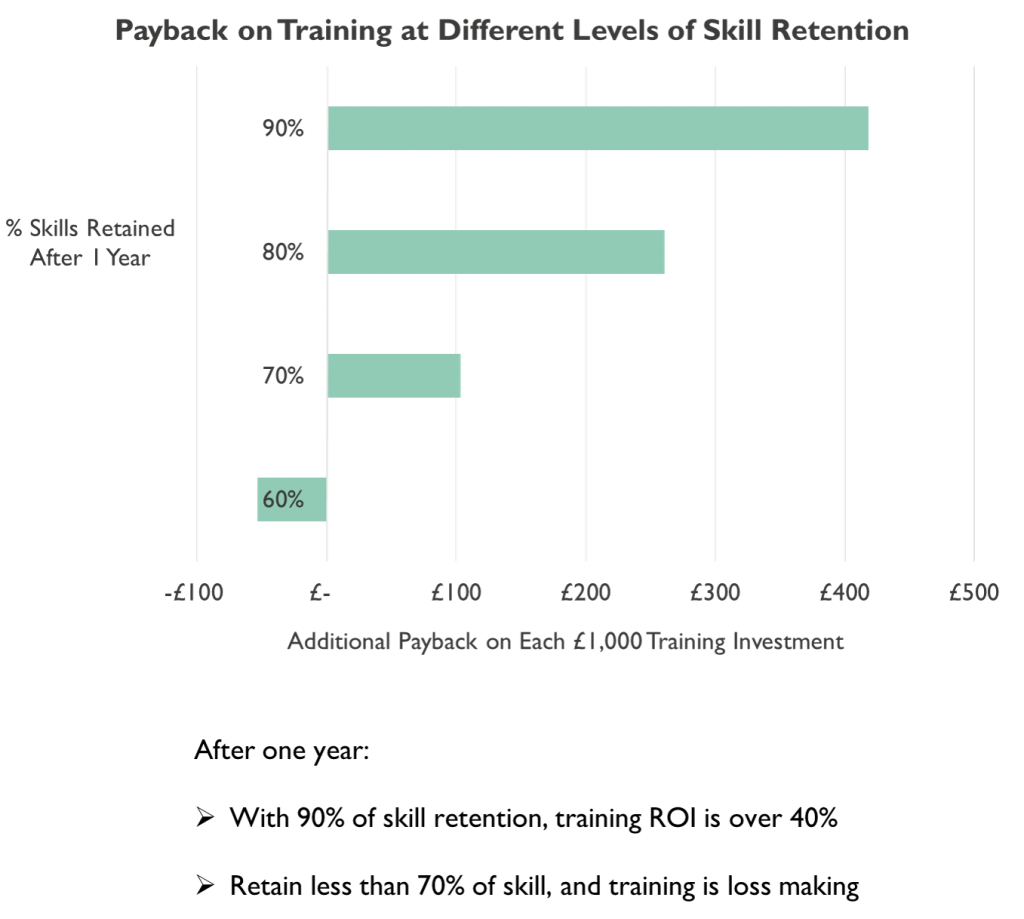A common and misguided way people use make a point or win an argument is to take their favoured option and contrast it with a shoddy alternative, or “straw man.” For politicians, this straw man is typically their opponent’s position described in such an oversimplified and biased way that the opponent looks a bit ridiculous. Business people use this technique too. Here’s a picture of straw man example, doing the rounds on LinkedIn, that draws on the current meme “you should love everything about leadership unless you’re a mild psychopath.”

This straw man technique is effective in persuading a two main groups: (1) people who already agree with us, and (2) people who don’t really care that much and want to make a quick decision so they can stop thinking about it. If we want to engage someone who actually cares about the subject we’re raising, the evidence shows that we’ll put them off if we use a straw man. People who care about a subject naturally find holes in such naive comparisons, to the protagonist’s discredit. Here’s the effect of 1 candidate using a straw man, in a couple of experiments where people were asked 1 to choose between 2 candidates.

So if your objective is to get approval from people who already agree with you, or who don’t care that much, then use that straw man. If you want to challenge people’s thinking properly, engage, and even persuade them in a subject they care about, then present the alternatives fairly, and explain in a balanced way why you and they should prefer the case you’re making. And please put that straw man on the top of the bonfire where he belongs.
The return on investment you got from driving lessons is more than infinitely higher (yes I really said that) than that high profile £1,000+ crammed-full-of-speakers training event you went to. The reason is this: skills can depreciate very quickly, so how well you’re using them 2, 5 or 10 years later is the difference between one of the best investments you ever make, and a costly waste of time.
Let’s look at a case example, based on a study by the excellent training researcher, Ann Bartel[1]. You can see that if a person retains the skill well a year later, returns[2] are outstanding (and if the person actually improves his or her skills every year, returns quickly get into triple digits). But if they lose a just a third of a new skill in a year, the training becomes a loss maker.

So how do we get those fantastic paybacks by having skills we’ll still be using well in 5 or 10 years?
- To start with, we learn skills that we know we’ll be using 5 or 10 years later, like goal setting or delegation or problem solving. Quickly debunked and forgotten management fads like Good to Great and Myers-Briggs are the Zumba Jazzercise of the training world and crash expensively at this first hurdle
- We practise, practise, practise in training until the skill starts to feel natural, and engages our procedural memory (the memory engaged for riding a bike). Concepts and insights alone are like reading about how to ride a bike
- We set things up to keep practising long after training is over (hopefully because we learned skills that make us better at our jobs and that we’ll enjoy using every day, but also maybe because we set up protocols that prompt us to practise)
If it all feels like learning to drive, or to ski or to do the breast stroke, then we’re onto a rewarding winner.
[1] Returns for 30% & 40% extrapolated from Bartel’s figures for 5%, 10% and 20%
[2] Calculated using wage uplift for the trainee; returns to the business are typically 5x this


